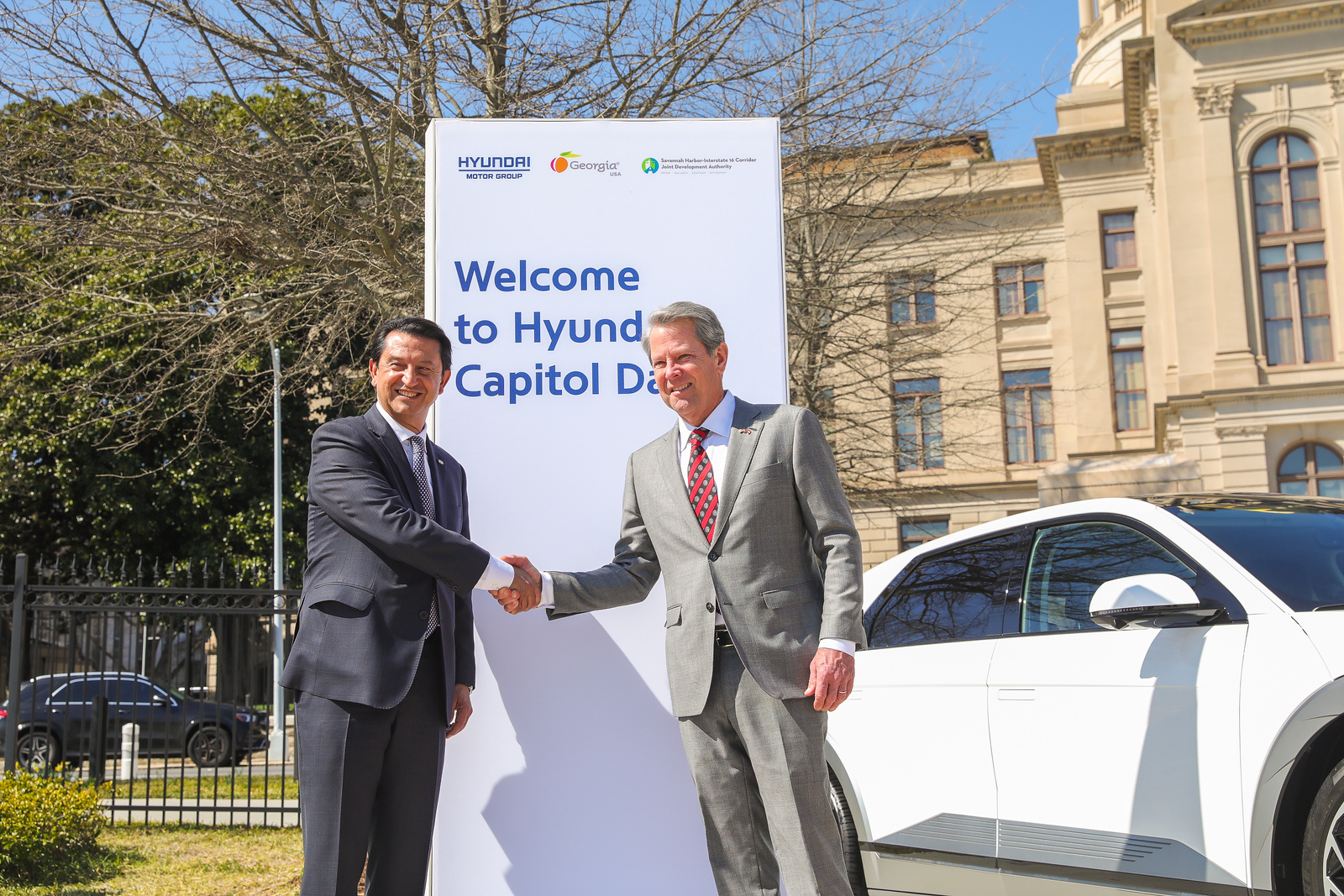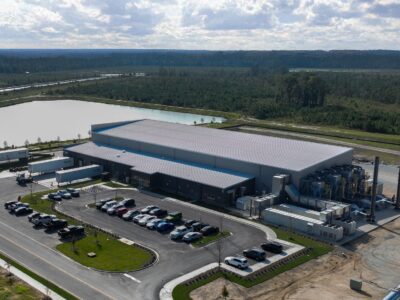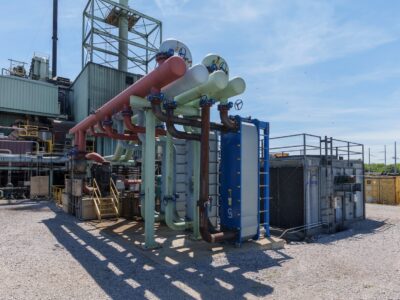Georgia is leading across the board in renewable energy. According to E2, the state currently ranks first in the nation in the number of clean energy projects announced since the Inflation Reduction Act (IRA) passed in August 2022, with 27 announcements, just ahead of Michigan’s 26. These deals translate to $15,086,500,000 in investment and 15,481 jobs.
Electric vehicle (EV) manufacturers, in particular, have set up shop in the state. Hyundai, for example, has several ongoing operations there. In Cartersville, Bartow County, northwest of Atlanta, Hyundai is teaming up with SK On on a $4 to $5 billion battery manufacturing plant that will create more than 3,500 jobs.
In a joint venture with LG Energy Solutions, the automaker is investing more than $4.3 billion to build a battery cell manufacturing facility in Savannah. Once it is up and running at the end of 2025, it will supply batteries for 300,000 EVs and support more than 3,000 jobs annually.
In addition, supplier Hyundai Mobis is investing $926 billion in a factory in Richmond Hill that is expected to come online this year.
It will create 1,500 jobs and produce 900,000 power systems and 450,000 integrated charging control units annually.
All of these will act as feeders in an ecosystem for a $7.6 billion EV and battery production “meta plant” in Ellabell, Bryan County. The factory is expected to begin churning out 300,000 EVs per year starting in 2025 and eventually employ 8,500 workers.
Originally announced in May 2022 as the automaker’s first factory in the country dedicated specifically to building EVs, the company later added even more financing to the project. With $2.1 billion in tax breaks offered by the state government, it is also the biggest economic development deal with the biggest incentive package in Georgia’s history, taking the crown from Rivian.
However, Rivian was among the first to toss its name into the state. In 2021, it announced it was investing $5 billion in Morgan and Walton counties east of Atlanta, having received an incentive package of $1.5 billion. The plant will eventually employ 7,500 people and build 400,000 cars annually. Although the automaker has temporarily paused construction to advance production of its R2 vehicle at its Illinois plant, work will eventually continue.

Photo Courtesy Georgia.gov
Kia is also getting in on the action. In July 2023, the automaker announced that it would invest $200 million more and create 200 more jobs in its plant in West Point. The factory is its only manufacturing plant in the U.S. and where it makes more than 40% of its cars sold here.
The new investment was mainly directed there to build its first electric models on the continent, including the 2024 EV9 three-row SUV.
This effort was nothing new for Kia, though; at the time of the announcement, it had already invested more than $1.9 billion in Georgia, even spurring Gov. Brian Kemp to designate Jan. 31 as “Kia Day.”
Companies specifically focused on batteries are also moving into Georgia. In 2019, South Korea-based SK Innovation announced a $1.67 billion investment in two battery plants in Commerce that would create 2,000 jobs. That was expanded the following year to an additional $940 million and 600 jobs.
In 2022, FREYR Battery said it would spend $2.57 billion on a battery cell manufacturing plant called Giga America in Coweta County and create 723 jobs. Notably, FREYR considered 170 locations in 34 states before selecting Georgia.
That same year, Ascend Elements — then called Battery Resourcers — selected Covington for a 154,000-square-foot battery recycling facility, no doubt due to its proximity to many other factories for inputs. The company invested $43 million and created 150 jobs. Last year, Anovion also declared that it would spend $800 million on a facility in Bainbridge to supply synthetic graphite anode materials for batteries, creating 400 jobs.
The state is also paying attention to its solar industry. In 2019, Korea-based QCells opened a solar panel manufacturing plant in Dalton, employing more than 750 people and producing 12,000 panels daily.
In 2022, QCells expanded this plant, creating 510 new jobs, and announced a $171 million investment for a new solar module manufacturing plant, also in Dalton, adding 470 more jobs to the state.
The company did not stop there, though. In January 2023, QCells announced even more financing, this time in the amount of $2.5 billion, making it the biggest solar investment in the history of the U.S. The money went toward expanding the Dalton plant and building a new solar manufacturing facility in Cartersville to produce solar panels and parts like ingots, wafers, cells, and modules. Not only did it mark the first solar plant expansion since the passage of the IRA, but QCells’ operations in the state also represent the country’s first complete solar supply chain.
Later in 2023, one of the company’s suppliers, Hanwha Advanced Materials Georgia, Inc., announced it would spend $147 million on a manufacturing facility for encapsulant film in Cartersville, supplying the QCells plant and creating 160 jobs.
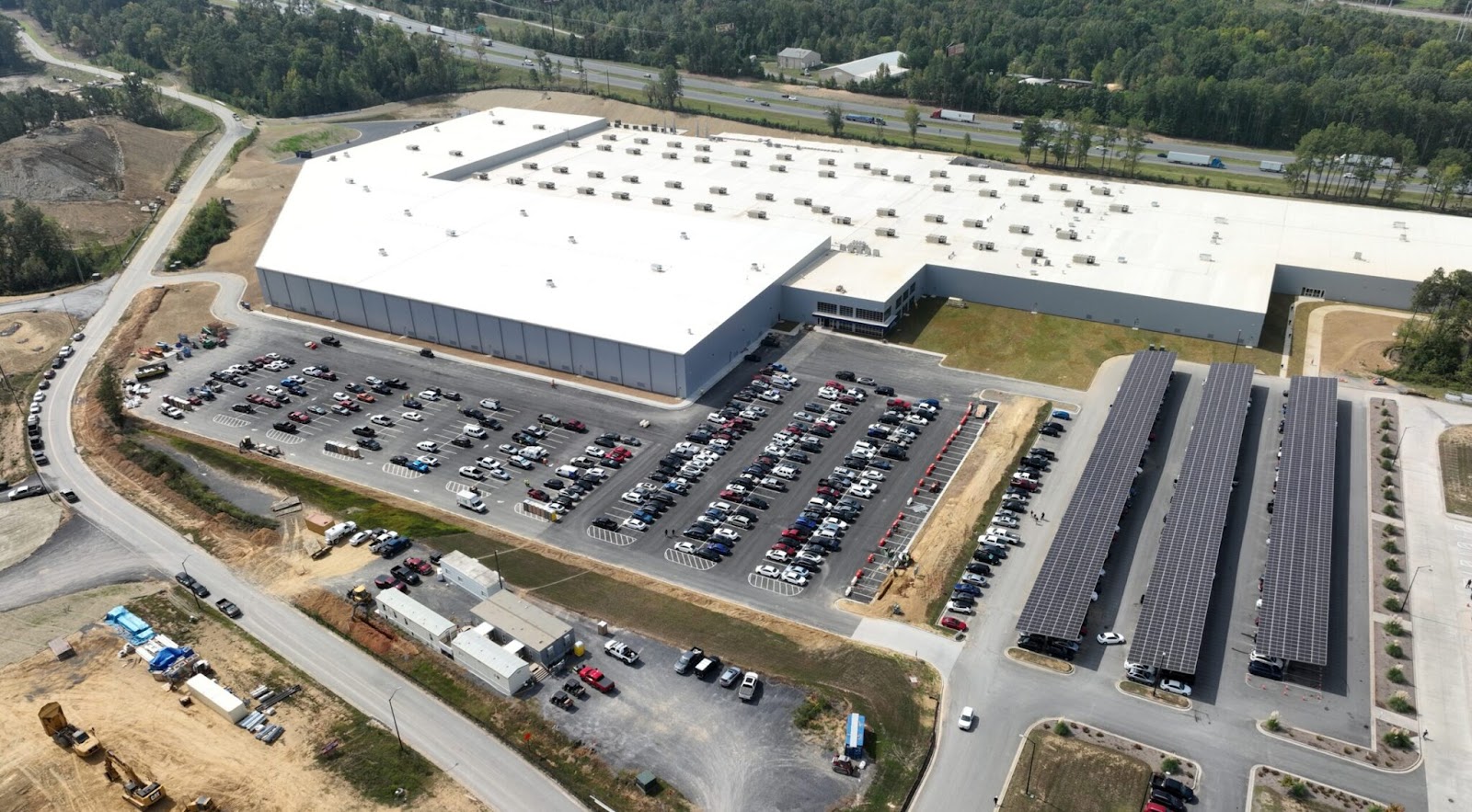
Photo Courtesy QCells
Other solar companies are also at work. In 2021, NanoPV invested $36 million in a manufacturing and distribution plant in Americus, creating over 500 jobs. After closing down a factory in Norcross in 2017 amidst financial problems, Suniva announced last year that it was reopening the plant and creating 240 jobs in the wake of the passage of the IRA.
This February, SOLARCYCLE announced it will invest $344 million in a solar glass manufacturing plant in Cedartown, creating 600 jobs.
State leadership is embracing this clean energy charge. In January, Gov. Kemp told the Associated Press he sold “the state from an economic development standpoint” at the World Economic Forum meeting in Davos, Switzerland. Speaking on a panel about EVs, he explained that, “[T]alking to the companies that we’re recruiting, people that are looking to the state, they obviously want to produce with clean energy.”
It’s all in line with his messaging at last year’s meeting — Kemp jokingly called himself a “Georgia redneck going to Davos,” to Politico. Ahead of that meeting, he touted the benefits to the economy and workforce of inviting this new manufacturing wave.
“I’m fulfilling my promise of creating good-paying jobs for our state,” Kemp told Politico. “I’ll tell you, there are a lot of conservatives that are driving electric vehicles. I’d also tell them: you need to go out and drive one because it’ll snap your head back.”
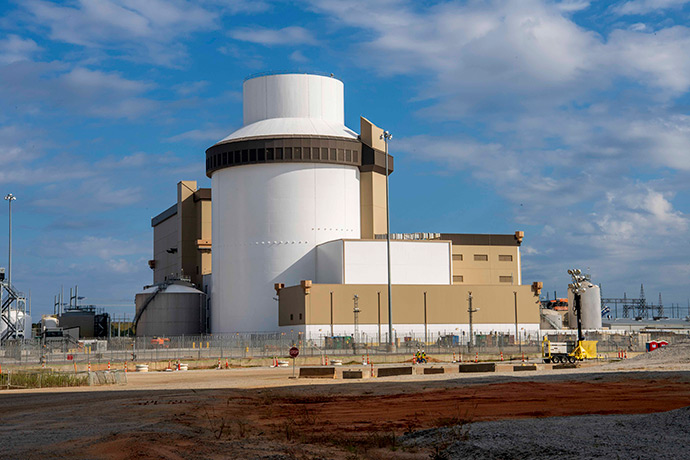
Photo Courtesy Georgia Power
At this year’s Davos meeting, Kemp discussed the benefits of the first new nuclear reactors being built in the U.S. in more than 30 years. So far, the Georgia Power project consists of two reactors at Plant Vogtle. Vogtle Unit 3 went live in July 2023, with the capacity to power about 500,000 businesses and residences for the next 60 to 80 years.
Vogtle Unit 4 delivered its first electricity to the grid on March 1, with commercial operations expected to follow shortly. When all four reactors are running, the site will be the country’s biggest clean energy generator.
The IRA was a huge boon to the clean energy economy in Georgia, but this plethora of announcements indicates that the state has long been pursuing such an agenda. “They’d get [the federal incentives] if they went to Texas, they’d get them if they went to Michigan, and they’d get them if they go to Georgia,” Kemp said in an Atlanta Journal-Constitution interview. “The key is: Why are they coming to Georgia? Because we created the ecosystem for that well before the IRA passed.”
And from all the action happening there, the state is getting closer day by day to achieving Kemp’s vision, as he laid it out in his 2023 inaugural address: “By the end of my second term as your governor, I intend for Georgia to be recognized as the electric mobility capital of America.”

